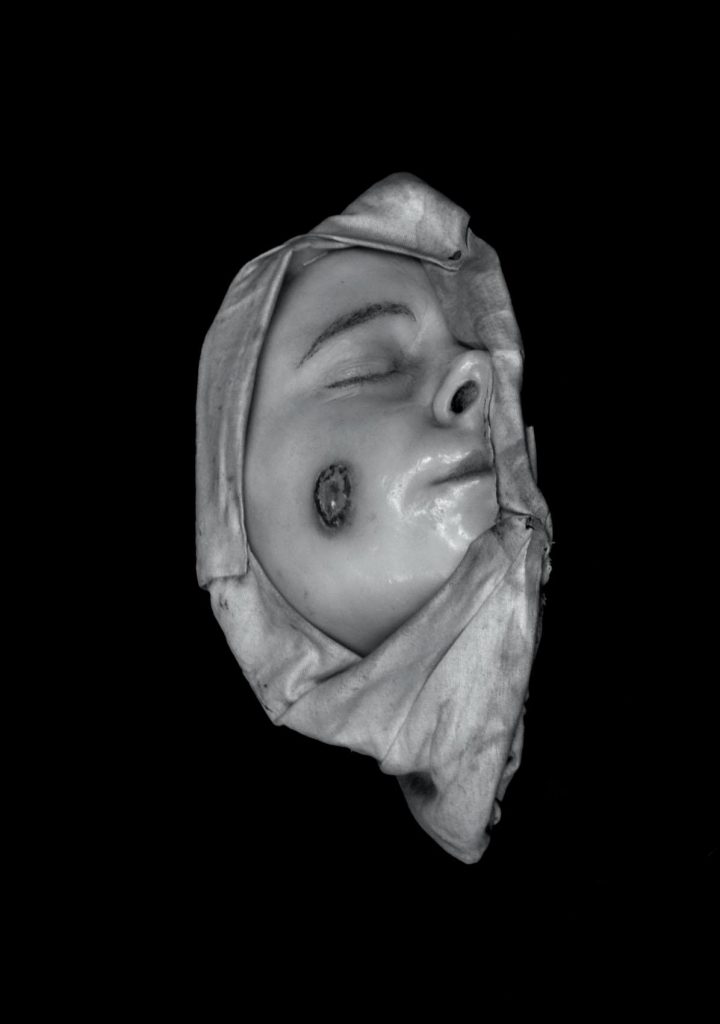
© Rosa Reis – CHLC0222, Colecção Caeiro Carrasco
The Bacchae of Euripides wander around a mystic ecstasy; The Bacchae by Marlene Monteiro Freitas run about a contemporary madhouse. The former has bodies and wine in the middle of woods with a massive fire – people taken by Bacchus dance until the non-thought; the latter has light, noise, plastic and artificial elements in a sterilized environment.
Bacchus mother, Semele, died because she asked Zeus to show himself to her in all his majesty. She could not stand the image of his divine essence, which may not only kill those who see it but also drives them to madness. Through the ritual, Bacchus’ image leads those before it to an irrational status of insanity; whereas the images by Monteiro Freitas lead us to a saturated mind: the stage filled with dancers, musicians and scenic elements, the white light always on the back of the scene, the sound of bodies and trumpets. The show pretends to have no harmony, it demonstrates no pity for those who are watching – one must join or one’s mind will be emptied, and that is the Bacchus threat.
Penetrating in the bipolarity of the show (the ecstasy followed by a deep quietness) one might discover evident cultural allusions: the painted eyes and the non-fluid body elements instinctively arise as if a representation of the painted stones the Greeks used to put on the deads’ eyes, or the still images on Greek vases – this aesthetic being used since Fellini’s Satyricon and mostly on Jan Fabre’s Olympus; the movements may take us to the dances in Sevilla’s traditional parties ; the three women wearing a golden swimming cap resemble the swimsuits ads in the fifties…
Euripides and Monteiro Freitas seem to have opposite ideas on what the relations between bodies in the Bacchae are, which is to say, in a situation as such, where people lose their minds: Monteiro Freitas submits us to a ritual where individuality rules, where almost no relation is established between the interpreters, and not the orgies and frenetic body contacts we are used with Euripides. They have different ideas on sensation and pleasure: while the latter presents us an insanity connected with the satisfaction of impulses of love and destruction, Monteiro Freitas’ sterilized scene offers us nothing but “plastic accomplishment” of birth and decadence; there is no impulse to be satisfied – it seems Bacchus is wrapped by kitchen plastic, it seems the wine is replaced by absinth…
The Bacchae by Monteiro Freitas begin and evolve at the most exhausting noise of a trumpet chorus. And they end by the music of Ravel’s Bolero, in a diminuendo repetition which resembles that of an after party, although the music does not lead us to rest or to some reestablishing sleep. Bacchus did not rest until he gathered enough followers to adore him. Through insanity, he achieved to call people to his cult. The Bacchae, urged by the god, would go from city to city, driving people wild, excited by his divine essence. Monteiro Freitas’ Bacchae leaves us in the shallow body of a spectator. There is no belief left. Her ecstasy is not that of Bacchus, but something much more artificial, trying to display life as an empty form of expression, and thus less rich, less inebriated, less tragic.
